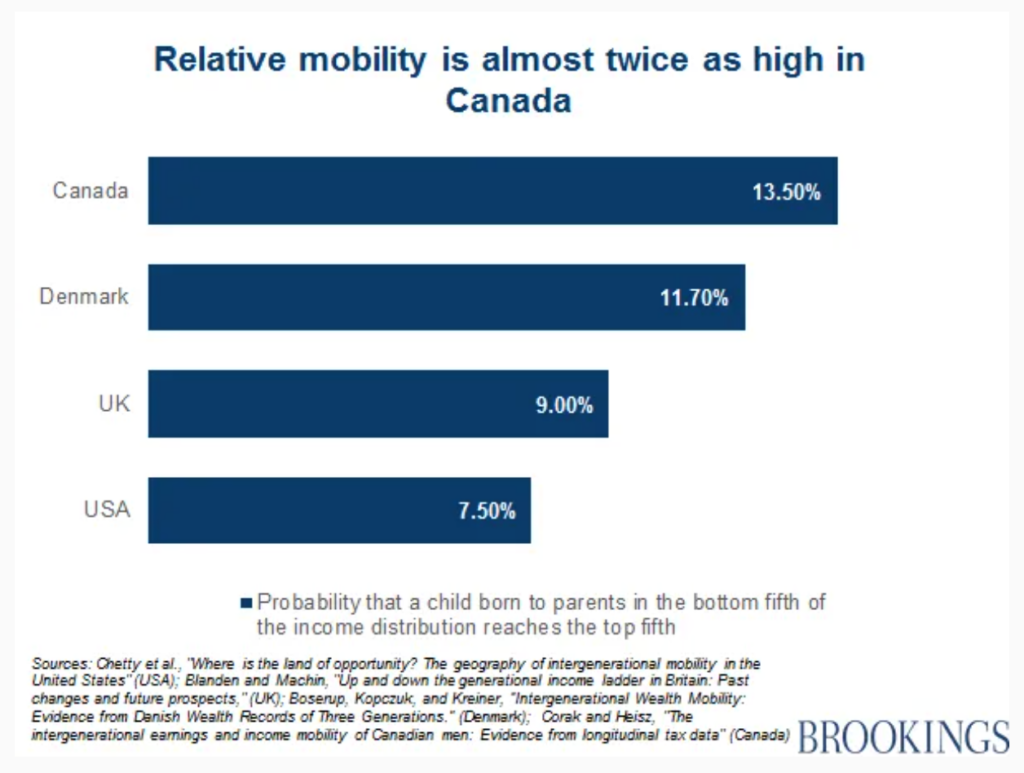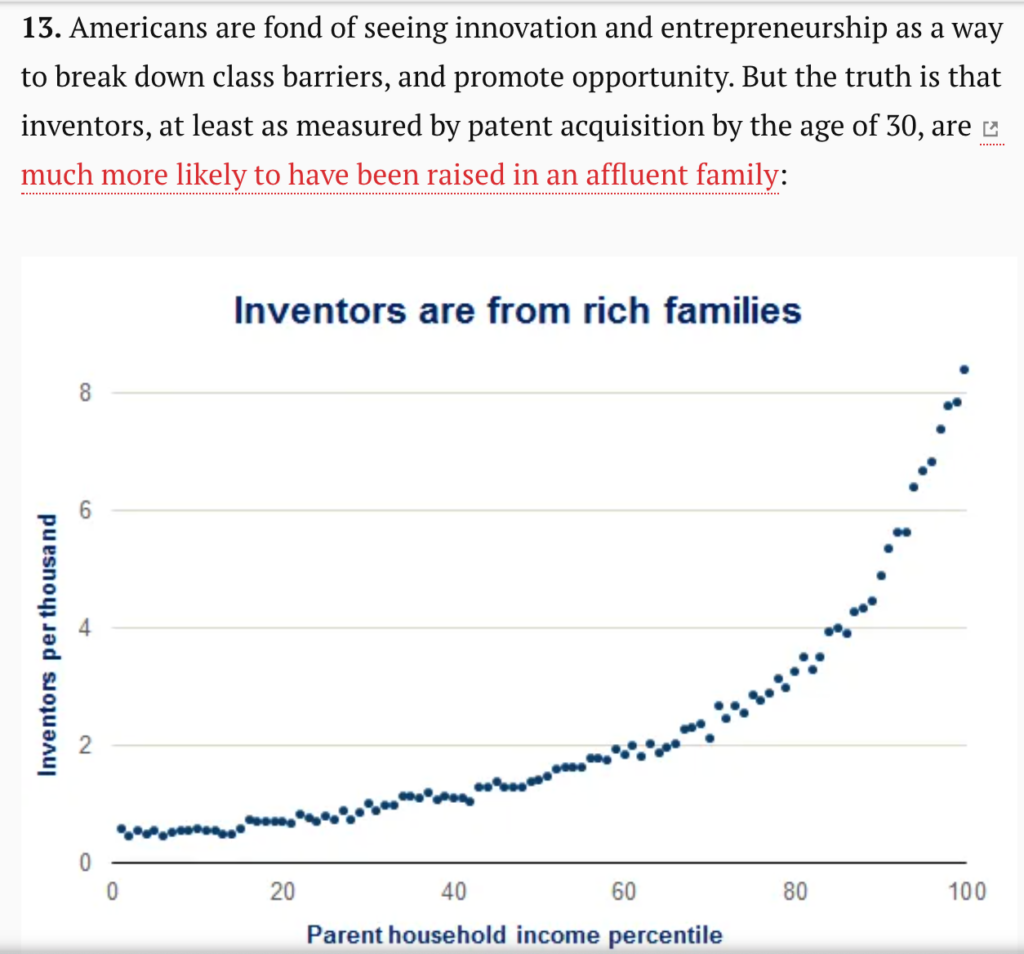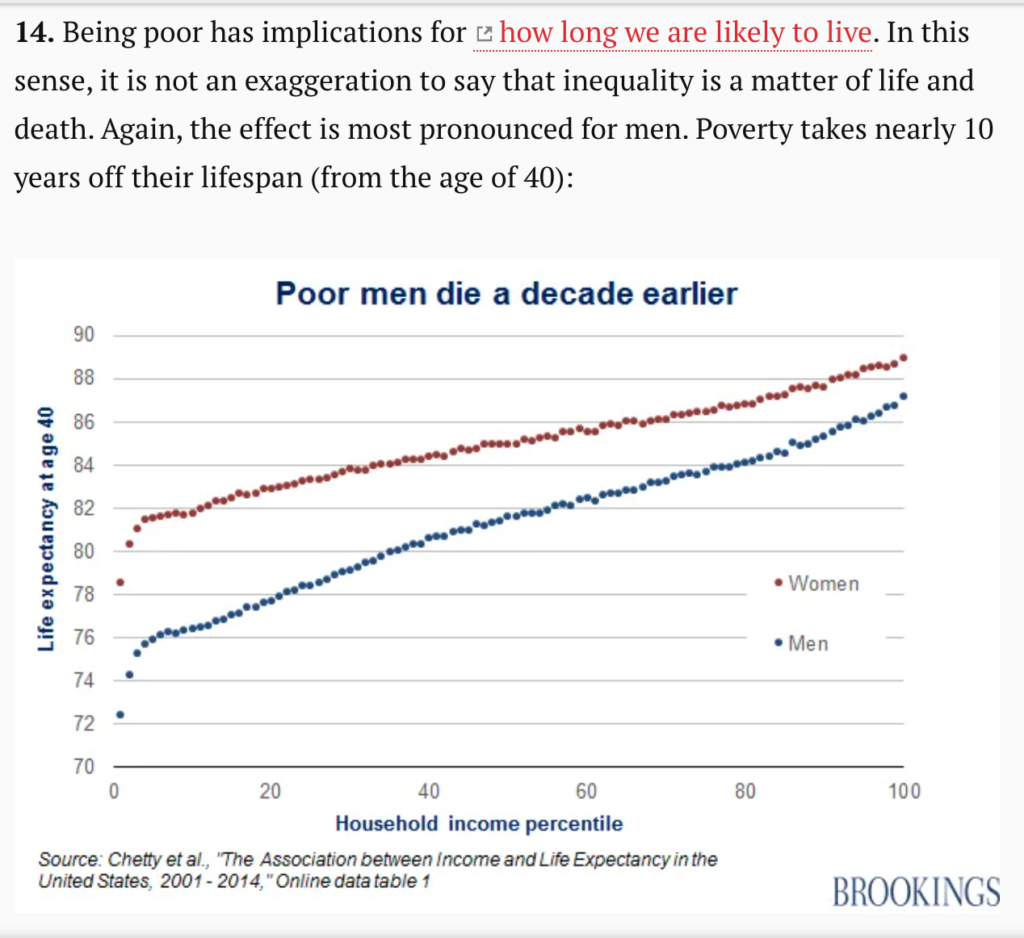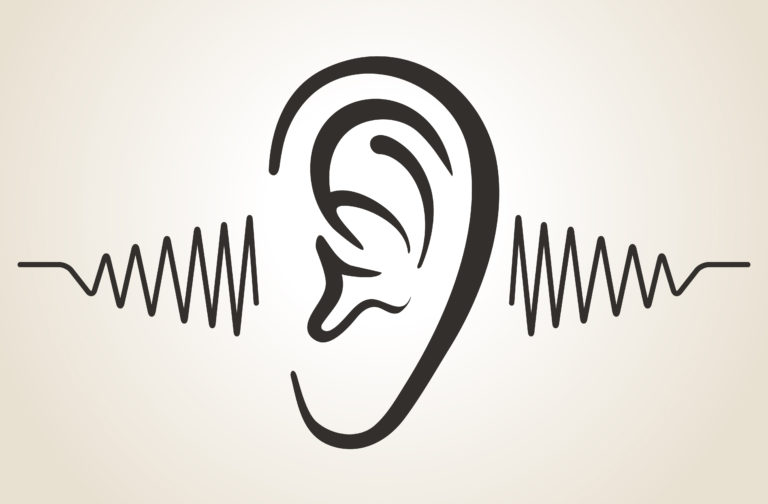Is it Still Possible?
Upward Social Mobility
What actually is Opportunity & Mobility?
Upward social mobility: What is it? In this case, leading researchers have divided up the population into five categories or quintiles. If you are born in the bottom 20% (experts refer to this as the bottom quintile), upward social mobility is the chance you have to move up to the top 20% (or the top quintile). Another term commonly used for upward social mobility is inequality.
According to The Brookings Institution, often referred to simply as Brookings, there are multiple layers at work when it comes to our personal social mobility. The most critical layer: Our parent’s position in the mobility quintile. After this, an individual’s position is largely dependent upon the individual’s education, where they live, their occupation and of course income. Brookings is an American research group founded in 1916 on Think Tank Row in Washington, D.C.
Can we still achieve the ‘American Dream?’
New research shows the United States is not as mobile of a nation as we would like to be, what we once were or what we think we are (aka the ‘American Dream’).
In fact, our neighbors to the North offer their citizen’s almost twice as much opportunity to move up from the bottom quadrants.
See Relative Mobility chart:

Year 2020 Has Impacted
Inequality Even Further
Unfortunately, the 2020 coronavirus global pandemic has increased every dimension of inequity even further: Race, income, rich country vs. poor country, service worker vs. office worker. The impact of inequality in the United States has reached even further. In almost every layer affecting mobility, the person in the more difficult situation has been affected far more than those who are not.
Why Haven’t We Made More Progress?
A common misperception is the belief that through innovation, an individual can quickly pull themselves out of the lower quintiles and move themselves into the highest quintile.
This may have been truer 50 years ago. Since 1971, the mobility opportunities offered via invention have been dwindling. Current data shows that as your household income shrinks, the less your chances are to acquire a patent for your invention. Looking at the chart, you can see the curve from the top dropping rapidly.
See Inventors chart:

Since March, I have rekindled my love for podcasts. I recently stumbled across a podcast discussing social mobility in the United States. This podcast led me to an article. The article led me to the leading expert on U.S. mobility in the field, Professor Raj Chetty. Prof. Chetty’s groundbreaking work led me to writing this blog!
Prof. Chetty has produced work deepening our understanding of relative intergenerational mobility. Within this, they have looked at the role of place (where you live), gender gaps in opportunity and life expectancy, how colleges act to both disrupt and reinforce inequality and the importance of experienced teachers in our schools. All factors combine to create drastic differences in opportunities for individual wealth.
When it comes to experienced teachers, kindergarten teachers matter most. The earlier the intervention in a child’s life, the better chance they have of upward mobility.
See K5 Teacher chart:

Where Do We Go from Here?
There are very high, structural barriers to social mobility in the U.S. Despite this, current findings show glimpses of hope. The intellectual potential in everyone is there, so we need to continue working on ways to level the equality playing field. These barriers are not insurmountable and can be lowered through the sustained application of tested, research based public policies.
We will never get to where a parent’s situation does not bias the outcome for their children. However, there are two areas where we do have great influence. One is our public school system and/or affordable private schools (this is by far the top agent of mobility). The other area is providing opportunities to low-mobility families to move into locations of high-mobility.
Place Matters for Mobility
There are significant differences in upward mobility rates across different places in the U.S. Cities in the Deep South and in the Midwest tend to have more sluggish mobility than other regions. In this sense, the American Dream persists – it is just unevenly distributed.
Why Schools Matter
Our Educational system has become many different things to many different types of families. To some, it is the Band-Aid holding their lives together. To others, it is the target of extreme criticism.
After her retirement, Justice Sandra Day O’Connor explained in an interview why public school were created. Initially, it was an institution to develop responsible citizenship while cultivating critical thinking among them.
These are two precepts I strive for and wish to preserve as a public-school teacher. Her interview (that I accidentally listened to one summer afternoon while sitting in my idling car) led me to change my career from the private sector to the public. I have worked in the Public Montessori sector over my entire educational career.
Public Montessori schools have the dual responsibility of adhering to state standards while maintaining the fidelity of Montessori education in the classroom. Currently, more than 500 public schools in the United States offer Montessori programs and this number continues to grow nationwide. Removing financial barriers, these schools allow families in any income bracket to choose the Montessori Method for their children.
Of course, in addition to Public Montessori schools, there are a number of other notable educational programs to choose from. Two programs popping first into my mind are language emersion programs and schools embracing project-based learning. I for one am always interested in learning about more!
The common theme among these educational programs is this – they provide a differentiated approach to learning.
Our Educational System
Has Never Been More Important
Many current educational programs cannot consistently meet the needs of all children. Our country has seen much change over the last 50 years. If we wish to remain a place with ample opportunity for upward mobility, then our public-school system and affordable private schooling has never been more important.
Is there room for improvement in our educational system? I think most of us would agree yes. But right now, free and/or affordable schooling is the best opportunity we have to offer our citizens upward social mobility.
Without upward social mobility, what is our alternative?

Do you have thoughts or comments on upward social mobility? Do you have a suggestion for another blog topic? Please send me an email with your ideas and experiences at grumble.services@gmail.com.
If you find this article helpful, please share it. If you haven’t done so already, please join us. Subscribe below and receive articles like this one in your email box weekly. Thank you!
All Rights Reserved • © 2021 Grumble Services LLC • grumbleservices.com
Read More: Growth Mindset:
How to Nourish it and Make it Thrive!

Read More & References :
Raj Chetty in 14 charts: Big Findings on Opportunity and Mobility We Should All Know
We’re Living in The Age of Downward Mobility – It’s time to unsubscribe from the dream
by Jessica Wildfire
What are Montessori Public Schools by The American Montessori Society



